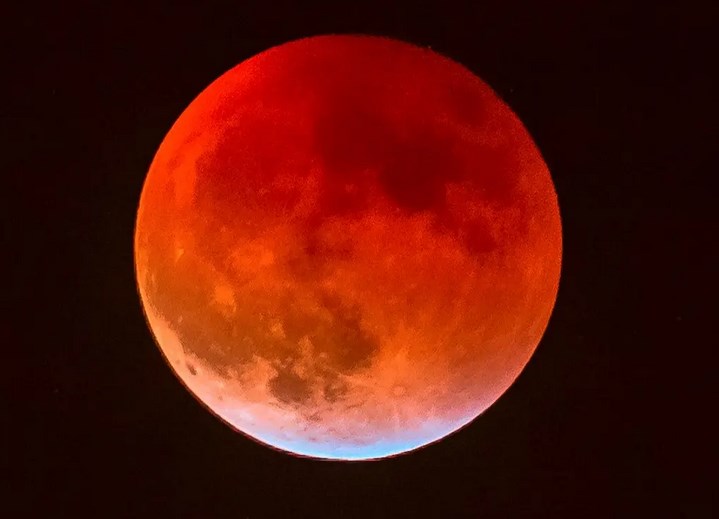Supermoon
Super moon refers to the coincidence of a full moon (or a new moon) with the closest approach the moon makes to the Earth on its elliptical orbit (perigee). Thus, the technical name for Super Moon is Perigee-Syzygy of the Earth-Moon-Sun system. It occurs when the full/new moon is within 224,791 miles distance from the Earth. Normally, there may be 2 to 4 full supermoons and 2 to 4 new supermoons occurring annually. On this day, moon sets in western horizon a few minutes before sunrise and then it will rise again on the same evening about an hour after the sunset.

Who coined the term Super Moon?
The name SuperMoon was coined by astrologer Richard Nolle in 1979. He defined super moon as:
“…a new or full moon which occurs with the Moon at or near (within 90% of) its closest approach to Earth in a given orbit (perigee). In short, Earth, Moon and Sun are all in a line, with Moon in its nearest approach to Earth.”
What is ‘Perigee-Syzygy’?
The term super moon is not widely accepted or used within the astronomy or scientific community, who prefer the term ‘Perigee-Syzygy’.
- Perigee: It is the point at which the Moon is closest in its orbit to the Earth.
- Syzygy: It is a full or new moon, when the Earth, the Moon and the Sun are aligned nearly in a straight line.
Super moon = Perigee + Syzygy, although they do not perfectly coincide each time.
Thus a Super moon can be regarded as a combination of the two, although they do not perfectly coincide each time. Syzygy may occur within a maximum of 12 hours from perigee during a super moon, and 1 hour from perigee during an extreme Super moon.
What is the effect of Super moon on Tides?
The relationship of the Moon with both oceanic and crustal tides has led to claims that the Super moon phenomenon may be linked with heightened risk of events such as earthquakes and volcanic eruptions. Nevertheless, the confirmation of such a link is broadly held to be doubtful.
The mutual effect of the Sun and Moon on the Earth’s oceans, the tide, is biggest when the Moon is either new or full. At lunar perigee the tidal force is even stronger, resulting in larger high and low tides on average, but even at its most powerful this force is still weak causing tidal differences of inches at most.
As the tidal force follows an inverse-cube law, that force is 18% greater than average. However, since the real amplitude of tides differs all over the world, this a direct effect might not be lead by it.


